
Insulin delivery company Insulet Corporation (NASDAQ: PODD) reported Q3 CY2025 results topping the market’s revenue expectations, with sales up 29.9% year on year to $706.3 million. On top of that, next quarter’s revenue guidance ($767.8 million at the midpoint) was surprisingly good and 5.1% above what analysts were expecting. Its non-GAAP profit of $1.24 per share was 8.1% above analysts’ consensus estimates.
Is now the time to buy Insulet? Find out by accessing our full research report, it’s free for active Edge members.
Insulet (PODD) Q3 CY2025 Highlights:
- Revenue: $706.3 million vs analyst estimates of $679.6 million (29.9% year-on-year growth, 3.9% beat)
- Adjusted EPS: $1.24 vs analyst estimates of $1.15 (8.1% beat)
- Revenue Guidance for Q4 CY2025 is $767.8 million at the midpoint, above analyst estimates of $730.5 million
- Operating Margin: 16.7%, in line with the same quarter last year
- Free Cash Flow Margin: 14.2%, similar to the same quarter last year
- Constant Currency Revenue rose 28.2% year on year (25.4% in the same quarter last year)
- Market Capitalization: $22.13 billion
“We delivered strong third quarter results, a testament to our team’s exceptional performance and the transformative power of Omnipod 5 for people living with diabetes,” said Ashley McEvoy, President and CEO.
Company Overview
Revolutionizing diabetes care with its tubeless "Pod" technology, Insulet (NASDAQ: PODD) develops and manufactures innovative insulin delivery systems for people with diabetes, primarily through its Omnipod product line.
Revenue Growth
Examining a company’s long-term performance can provide clues about its quality. Any business can put up a good quarter or two, but the best consistently grow over the long haul. Thankfully, Insulet’s 23.8% annualized revenue growth over the last five years was excellent. Its growth surpassed the average healthcare company and shows its offerings resonate with customers, a great starting point for our analysis.
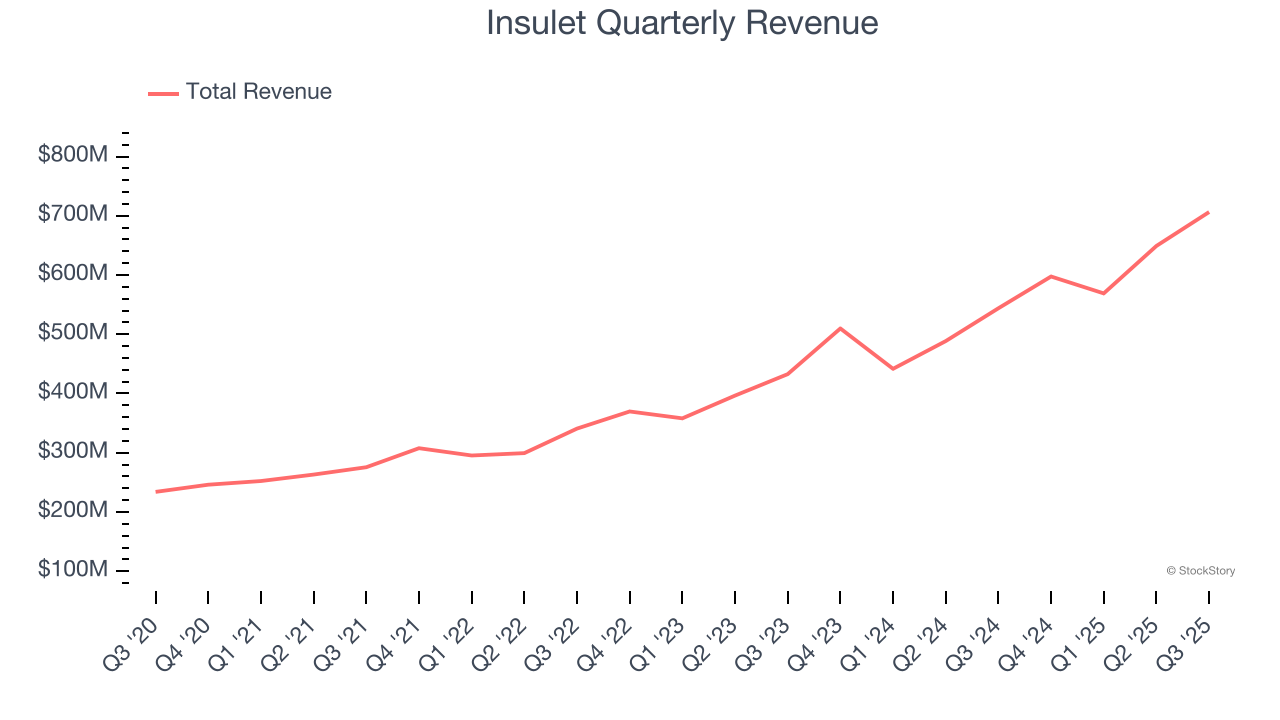
We at StockStory place the most emphasis on long-term growth, but within healthcare, a half-decade historical view may miss recent innovations or disruptive industry trends. Insulet’s annualized revenue growth of 27.3% over the last two years is above its five-year trend, suggesting its demand was strong and recently accelerated. 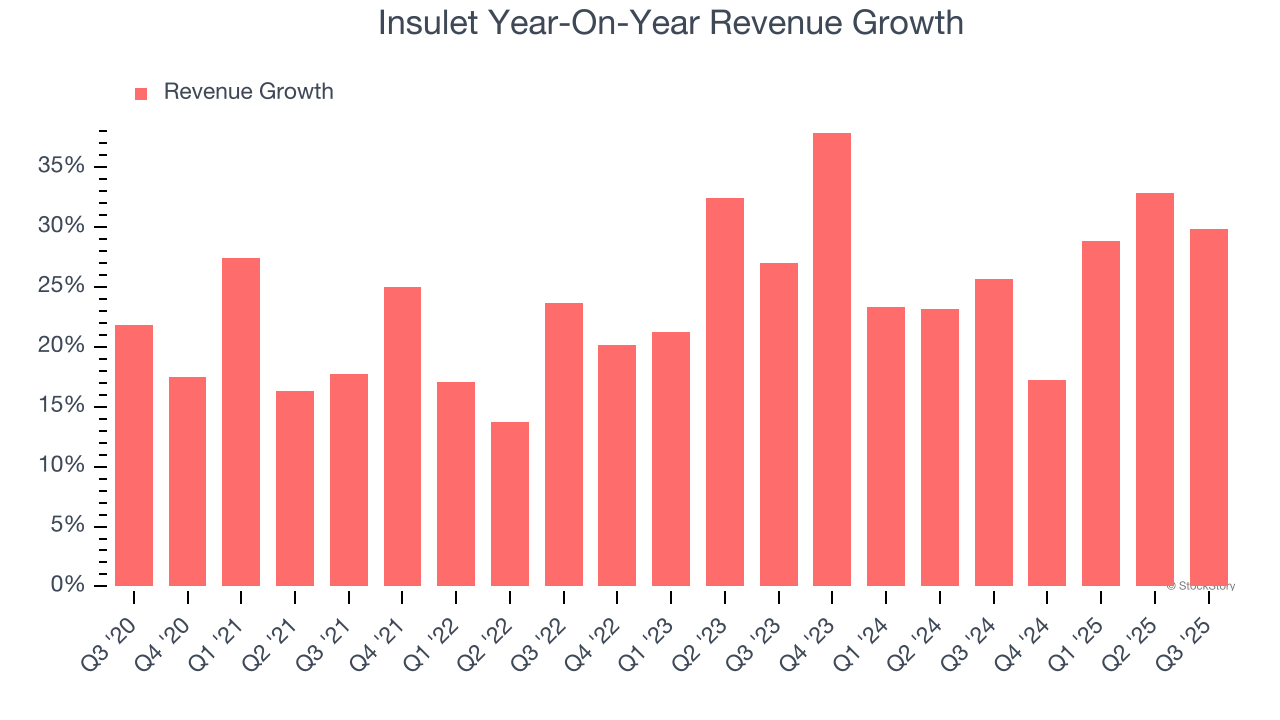
We can better understand the company’s sales dynamics by analyzing its constant currency revenue, which excludes currency movements that are outside their control and not indicative of demand. Over the last two years, its constant currency sales averaged 26.8% year-on-year growth. Because this number aligns with its normal revenue growth, we can see that Insulet has properly hedged its foreign currency exposure. 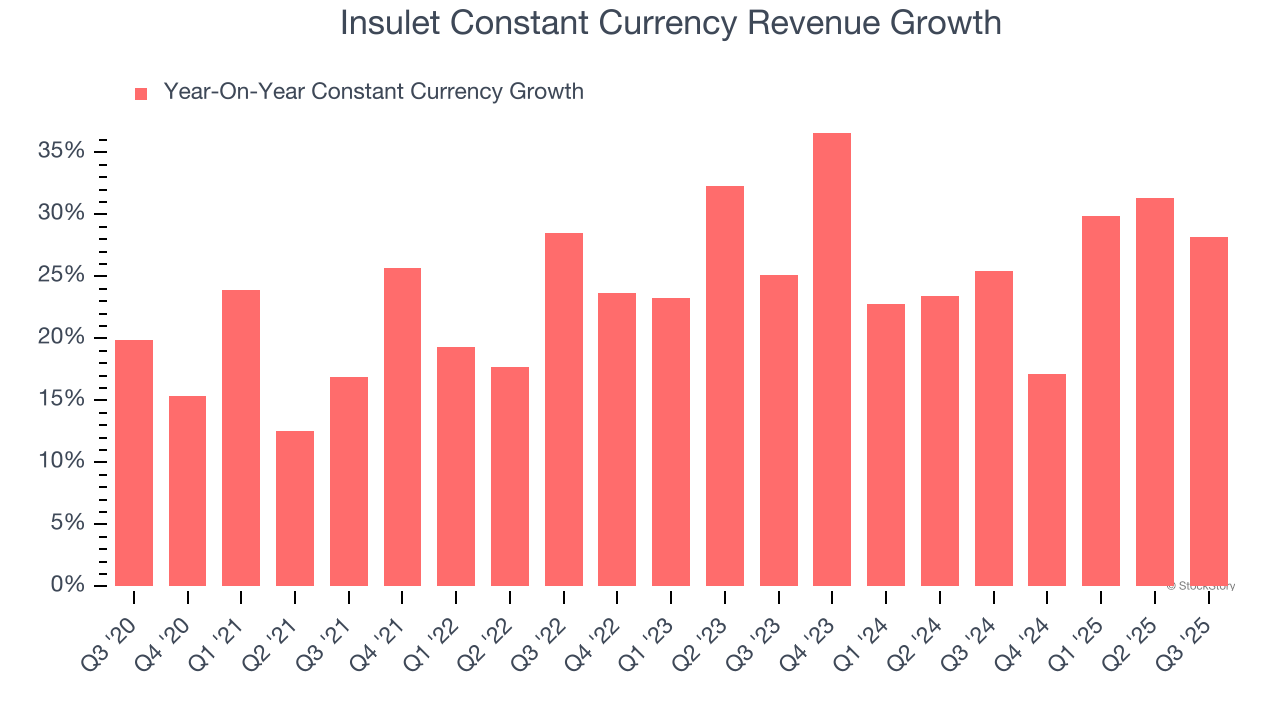
This quarter, Insulet reported robust year-on-year revenue growth of 29.9%, and its $706.3 million of revenue topped Wall Street estimates by 3.9%. Company management is currently guiding for a 28.5% year-on-year increase in sales next quarter.
Looking further ahead, sell-side analysts expect revenue to grow 18.4% over the next 12 months, a deceleration versus the last two years. Still, this projection is healthy and suggests the market is baking in success for its products and services.
The 1999 book Gorilla Game predicted Microsoft and Apple would dominate tech before it happened. Its thesis? Identify the platform winners early. Today, enterprise software companies embedding generative AI are becoming the new gorillas. a profitable, fast-growing enterprise software stock that is already riding the automation wave and looking to catch the generative AI next.
Operating Margin
Insulet has done a decent job managing its cost base over the last five years. The company has produced an average operating margin of 12.1%, higher than the broader healthcare sector.
Analyzing the trend in its profitability, Insulet’s operating margin rose by 10.7 percentage points over the last five years, as its sales growth gave it operating leverage. Zooming in on its more recent performance, we can see the company’s trajectory is intact as its margin has also increased by 8.5 percentage points on a two-year basis. These data points are very encouraging and show momentum is on its side.
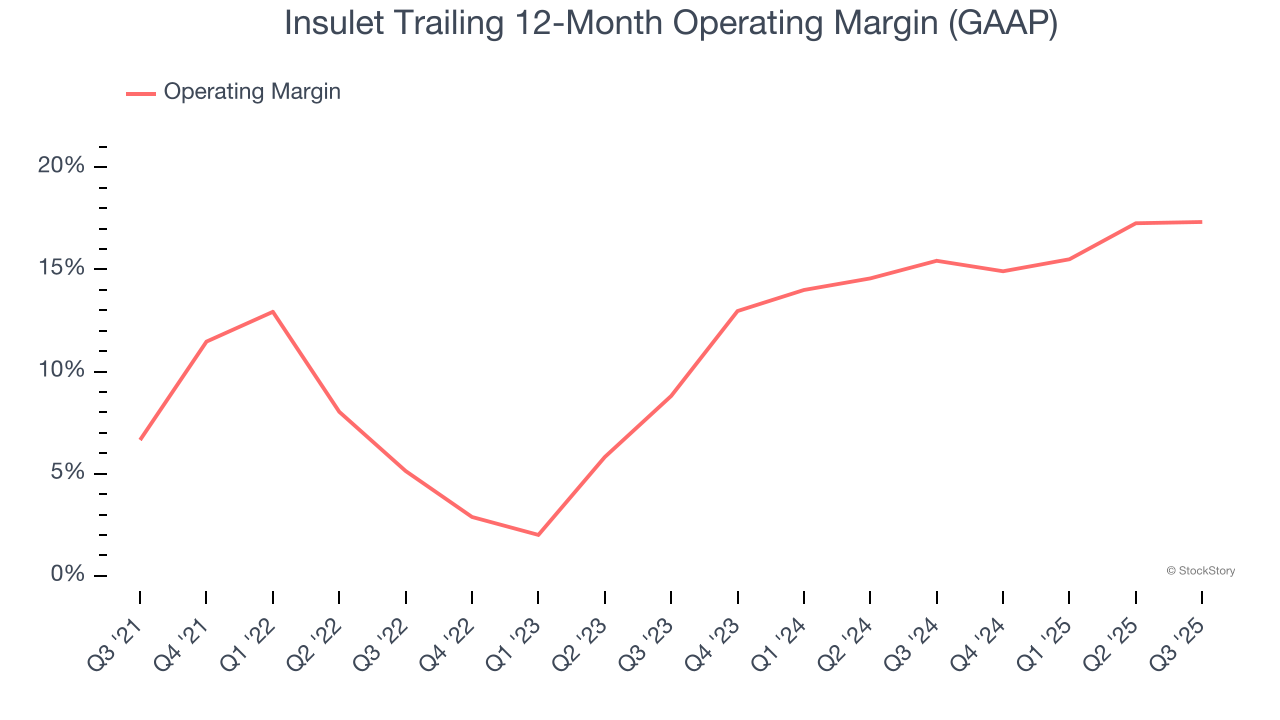
This quarter, Insulet generated an operating margin profit margin of 16.7%, in line with the same quarter last year. This indicates the company’s overall cost structure has been relatively stable.
Earnings Per Share
Revenue trends explain a company’s historical growth, but the long-term change in earnings per share (EPS) points to the profitability of that growth – for example, a company could inflate its sales through excessive spending on advertising and promotions.
Insulet’s EPS grew at an astounding 59.9% compounded annual growth rate over the last five years, higher than its 23.8% annualized revenue growth. This tells us the company became more profitable on a per-share basis as it expanded.
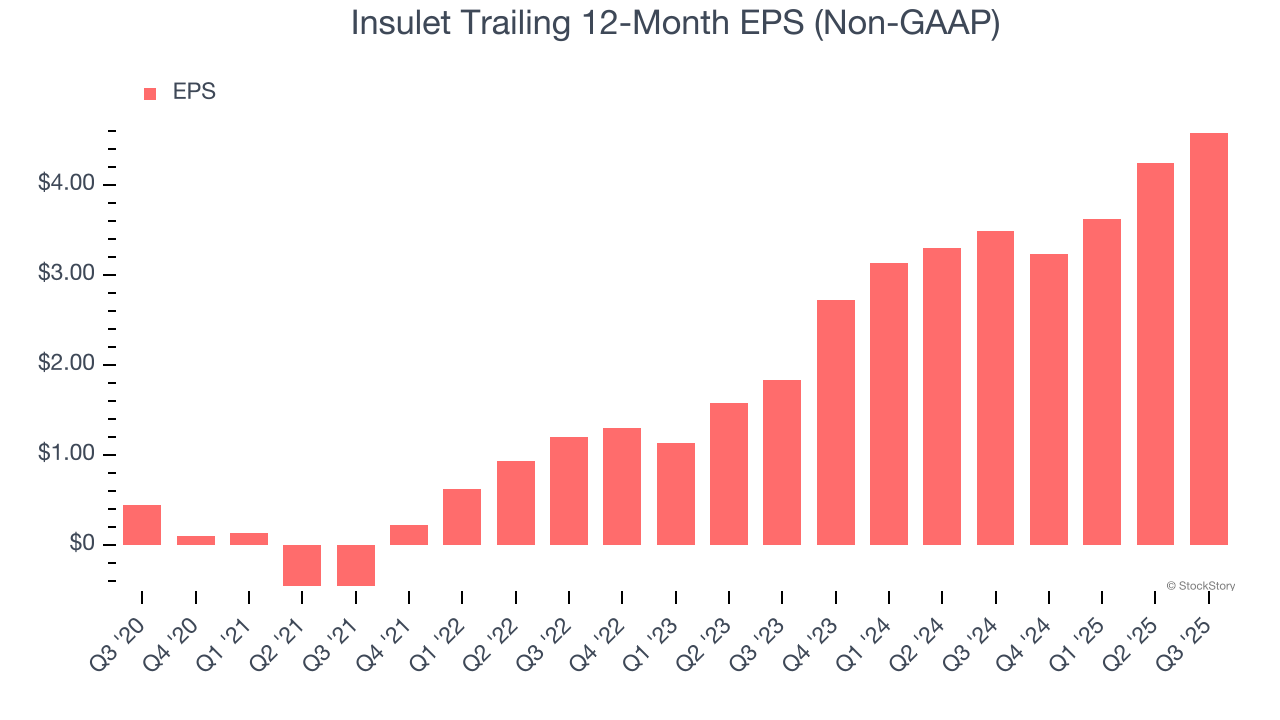
We can take a deeper look into Insulet’s earnings to better understand the drivers of its performance. As we mentioned earlier, Insulet’s operating margin was flat this quarter but expanded by 10.7 percentage points over the last five years. This was the most relevant factor (aside from the revenue impact) behind its higher earnings; interest expenses and taxes can also affect EPS but don’t tell us as much about a company’s fundamentals.
In Q3, Insulet reported adjusted EPS of $1.24, up from $0.90 in the same quarter last year. This print beat analysts’ estimates by 8.1%. Over the next 12 months, Wall Street expects Insulet’s full-year EPS of $4.58 to grow 18.2%.
Key Takeaways from Insulet’s Q3 Results
We were impressed by how significantly Insulet blew past analysts’ constant currency revenue expectations this quarter. We were also glad its revenue guidance for next quarter trumped Wall Street’s estimates. Zooming out, we think this was a good print with some key areas of upside. The stock remained flat at $314.01 immediately following the results.
So do we think Insulet is an attractive buy at the current price? When making that decision, it’s important to consider its valuation, business qualities, as well as what has happened in the latest quarter. We cover that in our actionable full research report which you can read here, it’s free for active Edge members.






